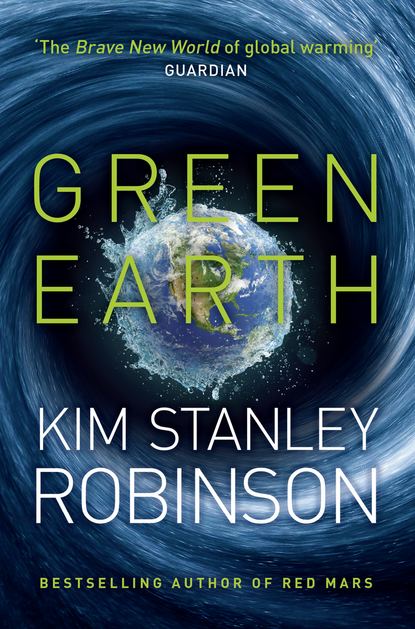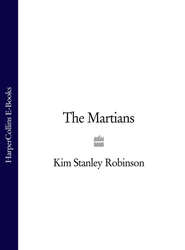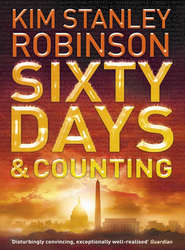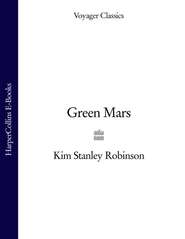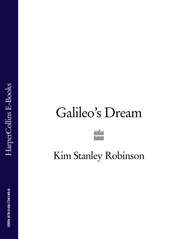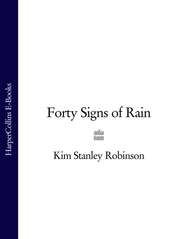По всем вопросам обращайтесь на: info@litportal.ru
(©) 2003-2024.
✖
Green Earth
Автор
Год написания книги
2018
Настройки чтения
Размер шрифта
Высота строк
Поля
Topsoil Loss Nears a Million Acres a Year. Deforestation now faster in temperate than tropical forests. Only 35% of tropical forests left.
The average Indian consumes 200 kilograms of grain a year; the average American, 800 kilograms; the average Italian, 400 kilograms. The Italian diet was rated best in the world for heart disease.
300 Tons of Weapons-grade Uranium and Plutonium Unaccounted For. High Mutation Rate of Microorganisms Near Radioactive Waste Treatment Sites. Antibiotics in Animal Feed Reduce Medical Effectiveness of Antibiotics for Humans. Environmental estrogens suspected in lowest ever human sperm counts.
Two Billion Tons of Carbon Added to the Atmosphere This Year. One of the five hottest years on record, again. The Fed Hopes U.S. Economy Will Grow by Four Percent in the Final Quarter.
Anna Quibler was in her office getting pumped. Her door was closed, the drapes (installed for her) were drawn. The pump was whirring in its triple sequence: low sigh, wheeze, clunk. The big suction cup made its vacuum pull during the wheeze, tugging her distended left breast outward and causing drips of white milk to fall off the end of her nipple. The milk then ran down a clear tube into the clear bag in its plastic protective tube, which she would fill to the ten-ounce mark.
It was an unconscious activity by now, and she was working on her computer while it happened. She only had to remember not to overfill the bottle, and to switch breasts. She had long since explored the biological and engineering details of this process, and had gotten not exactly bored, but as far as she could go with it, and used to the sameness of it all. There was nothing new to investigate, so she was on to other things. What Anna liked was to study new things. This was what kept her coauthoring papers with her sometime-collaborators at Duke, and working on the editorial board of The Journal of Statistical Biology, despite the fact that her job at NSF as director of the Bioinformatics Division might be said to be occupying her more than full-time already. But much of that job was administrative, and like the milk pumping, fully explored. It was in her other projects where she could still learn new things.
Right now her new thing was a little search investigating the NSF’s ability to help Khembalung. She navigated her way through the online network of scientific institutions with an ease born of long practice, click by click.
Among NSF’s array of departments was an Office of International Science and Engineering, which Anna was impressed to find had managed to garner ten percent of the total NSF budget. It ran an International Biological Program, which sponsored a project called TOGA—“Tropical Oceans, Global Atmosphere.” TOGA funded study programs, many including an infrastructure-dispersion element, in which the scientific infrastructure built for the work was given to the host institution at the end of the study period.
Anna had already been tracking NSF’s infrastructure dispersion programs for another project, so she added this one to that list too. Projects like these were why people joked about the mobile hanging in the atrium being meant to represent a hammer and sickle, deconstructed so that outsiders would not recognize the socialistic nature of NSF’s tendency to give away capital, and to act as if everyone owned the world equally. Anna liked these tendencies and the projects that resulted, though she did not think of them in political terms. She just liked the way NSF focused on work rather than theory or talk. That was her preference too. She liked quantitative solutions to quantified problems.
In this case, the problem was the Khembalis’ little island (fifty-two square kilometers, their website said), which was clearly in all-too-good a location for ongoing studies of Gangean flooding and tidal storms in the Indian Ocean. Anna tapped at her keyboard, bookmarking for an e-mail to Drepung, cc’ing also the Khembalung Institute for Higher Studies, which he had told her about. This institute’s website indicated it was devoted to medicinal and religious studies (whatever those were, she didn’t want to know) but that would be all right—if the Khembalis could mount a good proposal, the need for a wider range of fields among them could become part of its “broader impacts,” and thus an advantage: NSF judged proposals on intellectual merit and broader impacts, the latter to count as twenty-five percent of any evaluation. So it mattered what the project might do in the world.
She searched the web further. USGCRP, the “US Global Change Research Program,” two billion dollars a year; the South Asian START Regional Research Centre (SAS-RRC), based at the National Physical Laboratory in New Delhi, stations in Bangladesh, Nepal, and Mauritius … INDOEX, the Indian Ocean Experiment, also concerned with aerosols, as was its offspring, Project Asian Brown Cloud. These studied the ever-thickening haze covering South Asia and possibly making the monsoon irregular, with disastrous results. Certainly Khembalung was well situated to join that study. Also ALGAS, the “Asia Least Cost Greenhouse Gas Abatement Strategy,” and LOICZ, “Land Ocean Interaction In the Coastal Zones.” That one had to be right on the money; Khembalung would make a perfect study site. Training, networking, biogeochemical cycle budgeting, socioeconomic modeling, impacts on the coastal systems of South Asia. Bookmark the site, add to the e-mail. A research facility in the mouth of the Ganges would be a very useful thing for all concerned.
“Ah shit.”
She had overflowed the milk bottle. Not the first time. She turned off the pump, poured off some of the milk from the full bottle into a four-ounce sack. She always filled quite a few four-ouncers, for use as snacks; she had never told Charlie that most of these were the result of her inattention.
As for herself, she was starving. It was always that way after pumping sessions. Each twenty ounces of milk she gave was the result of some thousand calories burned by her in the previous day, as far as she had been able to calculate; the analyses she had found had been pretty rough. In any case, she could with a clear conscience (and great pleasure) run down to the pizza place and eat till she was stuffed. Indeed she needed to eat or she would get lightheaded.
But first she had to pump the other breast at least a little, because letdown happened in both when she pumped, and she would end up uncomfortable if she didn’t. So she put the ten-ouncer in the little refrigerator, then got the other side going into the four-ouncer, while printing out a list of all the sites she had visited.
She called Drepung.
“Drepung, can you meet for lunch? I’ve got some ideas for how you might get some science support.”
“Yes, thanks. I’ll meet you at the Food Factory in twenty minutes, I’m just trying to buy some shoes for Rudra.”
“What kind are you getting him?”
“Running shoes. He’ll love them.”
On her way out she ran into Frank, also headed for the elevator.
“What you got?” he asked, gesturing at her list.
“Some stuff for the Khembalis,” she said.
“So they can study how to adapt to higher sea levels?”
She frowned. “No, it’s more than that. We can get them a lot of infrastructural help.”
“Good. But, you know. In the end they’re going to need more. And NSF doesn’t do remediation. It just serves its clients.”
Frank’s comment bugged Anna, and after a nice lunch with Drepung she went up to her office and called Sophie Harper, NSF’s liaison to Congress.
“Sophie, is there any way that NSF can set the agenda, so to speak?”
“Well, we ask Congress for funding in very specific ways, and they designate the money for those purposes.”
“So we might be able to ask for funds for certain things?”
“Yes, we do that. To an extent we set our own agenda. That’s why the appropriations committees don’t like us very much.”
“Why?”
“Because they hold the purse strings, and they’re very jealous of that power. I’ve had senators who believe the Earth is flat say to me, ‘Are you trying to tell me that you know what’s good for science better than I do?’ And of course that’s exactly what I’m trying to tell them, because it’s true, but what can you say? That’s the kind of person we sometimes have to deal with. And even with the best of committees, there’s a basic dislike for science’s autonomy.”
“But we’re only free to study things.”
“I don’t know what you mean.”
Anna sighed. “I don’t either. Listen Sophie, thanks for that. I’ll get back to you when I have a better idea what I’m trying to ask.”
“Always here. Check out NSF’s history pages on the website, you’ll learn some things you didn’t know.”
Anna hung up, and then did that very thing.
She had never gone to the website’s history pages before; she was not much for that kind of thing. But as she read, she realized Sophie had been right; because she had worked there so long, she had felt that she knew NSF’s story. But it wasn’t true.
After World War Two, Vannevar Bush, head of the wartime Office of Science and Technology, had pushed for a permanent federal agency to support basic scientific research. He argued that it was basic scientific research that had won the war (radar, penicillin, the bomb), and Congress had been convinced, and had passed a bill bringing the NSF into being.
After that it was one battle after another, mostly for funding. Many administrations and Congresses had feared and hated science, as far as Anna could see. They didn’t want to know things; it might get in the way of business.
For Anna there could be no greater intellectual crime. It was incomprehensible to her: they did not want to know things! And yet they did want to call the shots. To Anna this was crazy. Even Joe’s logic was stronger. How could such people exist, what could they be thinking? On what basis did they build such an incoherent mix of desires, to want to stay ignorant and to be powerful as well? Were these two parts of the same insanity?
She abandoned that train of thought, and read on to the end of the brief history. Throughout the years, NSF’s purposes and methods had held fast: to support basic research; to award grants; to decide things by peer review rather than bureaucratic fiat; to hire skilled scientists for permanent staff; to hire temporary staff from the expert cutting edges in every field.
Anna believed in all these, and she believed they had done demonstrable good. Fifty thousand proposals a year, eighty thousand people peer-reviewing them, ten thousand new proposals funded, twenty thousand grants continuing to be supported. All functioning to expand scientific knowledge, and the influence of science in human affairs.
She sat back in her chair, thinking it over. All that basic research, all that good work; and yet—thinking over the state of the world—somehow it had not been enough. Possibly they would have to consider doing something more. What that might be was not so clear.
Primates in the driver’s seat. It looked like they should all be dead. Multicar accidents, bloody incidents of road rage. Cars should have been ramming each other in huge demolition derbies, a global auto-da-fé.
But they were social creatures. The brain had ballooned precisely to enable it to make the calculations necessary to get along in groups. These were the parts of the brain engaged when people drove in crowded traffic. Thus along with all the jockeying and frustration came the satisfactions of winning a competition, or the solidarities of cooperating to mutual advantage. Let that poor idiot merge before his on-ramp lane disappeared; it would pay off later in the overall speed of traffic. Thus the little primate buzz.
When things went well. But so often what one saw were people playing badly. It was like a giant game of prisoner’s dilemma, the classic game in which two prisoners are separated and asked to tell tales on the other one, with release offered to them if they do. The standard computer model scoring system had it that if the prisoners cooperate with each other by staying silent, they each get three points; if both defect against the other, they each get one point; and if one defects and the other doesn’t, the defector gets five points and the sap gets zero points. Using this scoring system to play the game time after time, there is a first iteration which says, it is best to always defect. That’s the strategy that will gain the most points over the long haul, the computer simulations said—if you are only playing strangers once, and never seeing them again. And of course traffic looked as if it was that situation.
But the shadow of the future made all the difference. Day in and day out, you drove into the same traffic jam, with the same basic population of players. If you therefore played the game as if playing with the same opponent every time, which in a sense you were, with you learning them and them learning you, then more elaborate strategies would gain more points than “always defect.” The first version of the more successful strategy was called “tit-for-tat,” in which you did to your opponent what they last did to you. This outcompeted “always defect,” which in a way was a rather encouraging finding. But tit-for-tat was not the perfect strategy, because it could spiral in either direction, good or bad, and the bad was an endless feud. Thus further trials had found successful variously revised versions of tit-for-tat, like “generous tit-for-tat,” in which you gave opponents one defection before turning on them, or “always generous,” which in certain limited conditions worked well. Or, the most powerful strategy Frank knew of, an irregularly generous tit-for-tat where you forgave defecting opponents once before turning on them, but only about a third of the time, and unpredictably, so you were not regularly taken advantage of by one of the less cooperative strategies, but could still pull out of a death spiral of tit-for-tat feuding if one should arise. Various versions of these “firm but fair” irregular strategies appeared to be best if you were dealing with the same opponent over and over.
In traffic, at work, in relationships of every kind—social life was nothing but a series of prisoners’ dilemmas. Compete or cooperate? Be selfish or generous? It would be best if you could always trust other players to cooperate, and safely practice always generous; but in real life people did not turn out to earn that trust. That was one of the great shocks of adolescence, perhaps, that realization; which alas came to many at an even younger age. And after that you had to work things out case by case, your strategy being then a matter of your history, or your personality, who could say.





